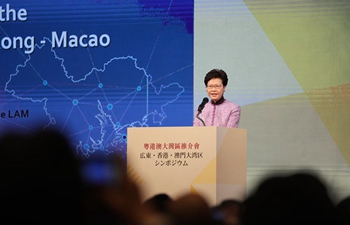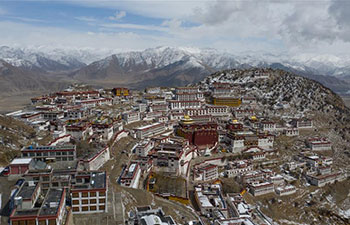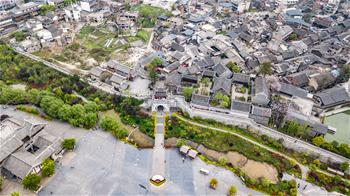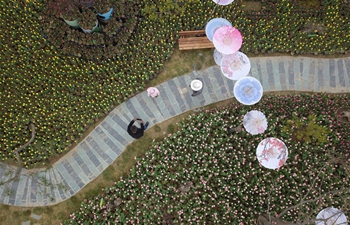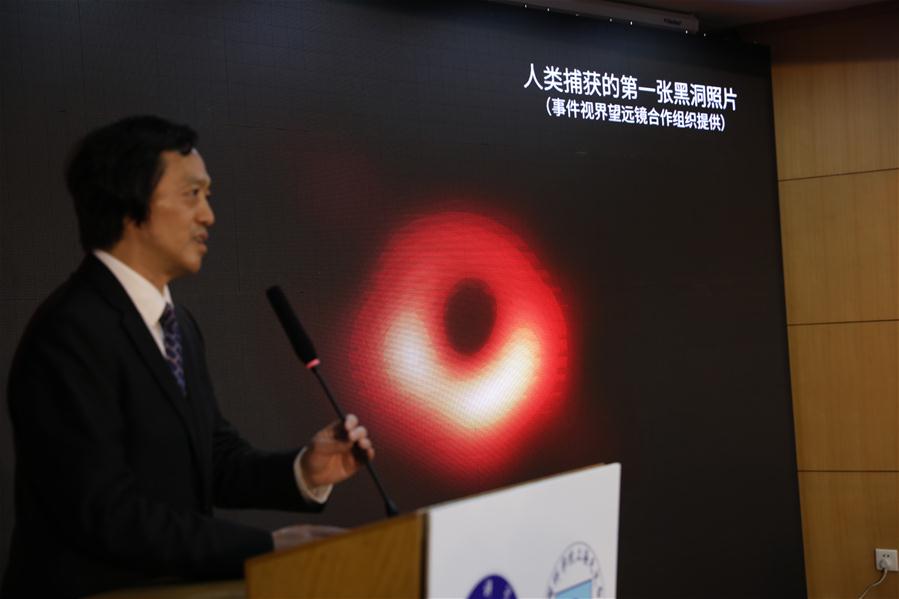
Shen Zhiqiang, head of Shanghai Astronomical Observatory (SAO), presides over a press conference to release the first-ever image of a supermassive black hole at the heart of the distant galaxy M87, in east China's Shanghai, April 10, 2019. The image of the black hole, based on observations through the Event Horizon Telescope (EHT), a planet-scale array of eight ground-based radio telescopes forged through international collaboration, was unveiled in coordinated press conferences across the globe at around 9:00 p.m. (Beijing time) on Wednesday. The landmark result offers scientists a new way to study the most extreme objects in the universe predicted by Albert Einstein's general relativity. (Xinhua/Fang Zhe)
WASHINGTON, April 10 (Xinhua) -- Astronomers said here Wednesday that they captured the first image of a black hole, unveiling the first direct visual evidence of an unseeable cosmic object and its shadow.
An Earth-sized virtual telescope called Event Horizon Telescope (EHT) linking eight ground-based radio telescopes around the globe "saw" the black hole at the center of massive galaxy M87, 55 million light-years from Earth with a mass 6.5-billion times that of the Sun.
At the press conference, scientists revealed a donut-like structure with a dark central region and a bright ring, which is the black hole's shadow against a disc of glowing gas that falls onto the black hole.
It is a "surprising" finding, an "astonishment" and "wonder," Harvard astrophysicist Sheperd Doeleman, EHT's project director, described the image, whose release won immediate applause at the conference.
The landmark result offers scientists a new way to study the most extreme objects in the universe predicted by Albert Einstein's general relativity.
Black holes are extremely compressed cosmic objects predicted by Einstein's theory of general relativity. It has a gravitational pull that is so intense that nothing, not even light, can escape it once inside a certain region called the event horizon.
Jason Dexter, EHT team member and an astrophysicist with Max Planck Institute for Extraterrestrial Physics, told Xinhua that the size and shape of the shadow are "a prediction of general relativity and detecting it would be the best evidence for the existence of a black hole in the universe."
A team of more than 200 scientists including Chinese astronomers worked to capture and develop the image, thanks to a global network of eight pre-existing telescopes, according to EHT.
"Breakthroughs in technology and the completion of new radio telescopes over the past decade enabled our team to assemble this new instrument, designed to see the unseeable," said Doeleman.
"A direct observation of black hole will be tremendous for our understanding of the spacetime that we are in," Yau Shing-Tung, mathematician and a senior faculty of Harvard's Black Hole Initiative, told Xinhua.






